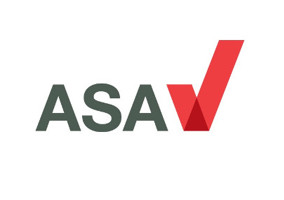While charities of all shapes and sizes are facing a range of issues, independent schools have specific ones to deal with. One of these is IR35, which has been highlighted by recent cases involving visiting music teachers. Here we look at two other challenges: rates relief removal; and the increase in teachers’ pension contributions.
Rates relief removal
There has been a lot of confusion among charities over rates relief provisions.
Local authorities are mandated to grant charities relief on 80 per cent of the rateable value of a property that is used for charitable purposes. They also have the discretion to provide relief on the remaining 20 per cent. That this element is voluntary poses a potential risk for future budget setting for all charities.
This raises questions over whether local authorities that do provide full relief might remove the discretionary element in order to increase their own revenues, and whether they would apply this consistently to all charities or just to certain types.
There is also the possibility that the mandatory element could come under threat. This would require action at a national level, but the legal advice is that legislation could quite easily be amended to allow local authorities to charge full rates.
We are already seeing this in Scotland, where the Non-Domestic Rates (Scotland) Bill is proposing that rates relief is removed from lands and heritages used by independent schools, unless they are special schools or specialise in music. How the legislation might be structured if it were adopted in other parts of the UK is open to conjecture.
If local authorities were given discretion over the whole relief, they might see removing it as quick and easy to achieve, but the consequences would need to be considered carefully. To remove the relief would be bad enough but to have different approaches applied depending on the local authority would be inappropriate.
Teachers' pensions
The recent rise in Teachers’ Pension Scheme (TPS) contributions payable by employers (in both the independent and state sectors) has not been well received. A rate increase was expected – but not the 43 per cent increase from 16.48 per cent to 23.68 per cent from 1 September 2019.
As with many charities that deliver services, salary costs often make up more than half of total costs. The impact of the increase on this expenditure mix represents an approximate real increase in costs of above 3.6 per cent before any other inflationary effects.
This has led to many who are part of the scheme to consider their options. While state schools were given a reprieve until the next spending review, the withdrawal of independent schools from the TPS alone has been estimated to leave the equivalent of an £800m hole in the scheme.
A news article in Schools Week in August revealed that 62 independent schools have decided to withdraw from the TPS. Many others are considering their future actions and one thing is clear: the full impact is yet to be realised.
Final thoughts...
We have seen an increasing number of organisations reforecast and scenario plan for various economic challenges they may face over the coming years. It is leading to very detailed discussions around trustee board tables about the options that are available and the future sustainability of many organisations that are smaller or are without significant reserves to fall back on.
The IR35 and self-employed status issues affect all organisations and a watching brief should continue for future announcements.
The threat of a removal of rates relief and the increase in TPS contributions – specifically in relation to charitable schools – are coming at a time when there is pressure to “do more” and “increase the amount of public benefit offered”. It is becoming increasingly difficult to balance the competing challenges of rising costs, political pressure and the drive to do more with less. At some point, something has to give.
It is now time for those who make a political football of the charitable schools’ sector to stand back and properly consider, as a whole, the impact that their measures will have on the long-term viability of those that make a huge contribution to society. If their actions lead to a requirement for the state sector to deliver more, how do they plan to cover the cost of increased provision when it is already creaking and underfunded?
What is required is not political point scoring and inconsistent policy decisions, but more of a proper understanding of what the sector is and what it delivers and contributes, before decisions are made that lead to counterproductive results.
Richard Weaver is head of charity and not for profit at haysmacintyre
This content has been supplied by a commercial partner. haysmacintyre sponsors the Sector Focus series.
Related articles












